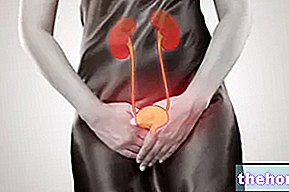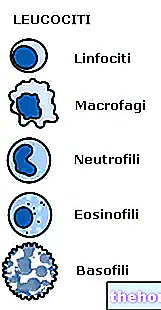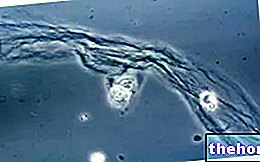The pH value must necessarily be determined on a sample of fresh urine, temporarily stored in a closed container (refrigerated if necessary if it is not possible to analyze it at the moment). Although these liquids are normally sterile, any bacterial contamination of the urine can in fact increase it. the pH, thanks to the ability of some microorganisms to break down urea into ammonia.

The most traditional and simple method to evaluate urine pH is to "dip a litmus paper in a sample of fresh urine. In practice, a paper strip containing a dye of natural origin is used, which gives it the ability to change color. from light green (at neutral pH) to various shades of red (in acidic environment, pH 8.0) Litmus paper therefore represents an excellent indicator of pH, which is established by comparing the color obtained with the relative chromatic reference scale.
In the medical field, the urinary pH is monitored in order to evaluate the existence of systemic disorders of the acid / base type, of metabolic or respiratory origin. Furthermore, it is important in monitoring all those patients who for certain reasons must maintain a specific pH. This is the case, for example, of people at risk of kidney stones, more likely when the urinary pH is very different from the "ideal" value (6.0 / 7.0 according to the authors). Acidic urine is associated with cystine, xanthine and uric acid stones, while in the presence of basic urine increases the risk of kidney concretions of calcium phosphate, calcium carbonate, magnesium phosphate and struvite. Calcium oxalate stones develop more in neutral or alkaline urinary environments.
- In the presence of uratic stones it is advisable to maintain the urinary pH between 6.5-6.8 to favor the dissolution of the uric acid crystals. A daily water intake of 2.5-3 liters is also recommended to facilitate the dilution of urinary uric acid.
An "acidification of the urinary pH can be of help as a support to pharmacological treatments against urinary infections *, while the maintenance of a basic pH is seen, especially by lovers of alternative medicines, as a sort of" purification "of the organism.
Without prejudice to the importance of a diet rich in fruit and vegetables, exasperating a certain aspect of one's diet by moving away from the concept of "varied and balanced" is always dangerous; we have seen, for example, how this practice can increase the risk of some types kidney stones, but there are also other conditions (such as the intake of certain medications, such as potassium-sparing diuretics) that support the danger of this dietary approach.
* Drugs such as streptomycin, neomycin and kanamycin are effective in treating urinary infections when the urine pH is alkaline.
.Furthermore, for some categories of patients it is important to maintain stable urinary pH values during the course of therapies, in order to be successful.
Urine is considered alkaline when the pH is greater than 7; this outcome is often found in cases of urinary tract infection. When the pH is less than 7, however, there may be problems such as diarrhea or starvation. inverse relationship between urine pH and urine ketone (acetone) levels.
A high pH in the urine can also be determined by the use of certain drugs, such as:
- Acetazolamide;
- Amiloride;
- Antibiotics;
- Potassium citrate;
- Sodium bicarbonate.
Most fruits and vegetables make the urine more alkaline, so it raises the pH.
poorly controlled (diabetic ketoacidosis);A low pH in the urine can also be determined by the use of certain drugs, such as:
- Ammonium chloride;
- Ascorbic acid;
- Diazoxide;
- Methenamine mandelate;
- Metolazone.
Currant juice, eggs, meat, pineapple juice, and high-protein diets make the urine more acidic, thus reducing the pH.
and after letting go of the very first issue. As for the influence of diet on urinary pH, acidic urine typically occurs in diets rich in meat, especially if preserved, and alkaline urine in vegetarian diets or more generally rich in vegetables and fruit (with the exception of plums and blueberries) The topic, together with the physiological mechanisms responsible for the control of urinary and plasma pH, has been explored in this article dedicated to the alkaline diet.
Finally, we underline how the urine pH is lower in the morning than in the evening, since during sleep the reduction of pulmonary ventilation causes respiratory acidosis; for this reason it is preferable to measure it especially upon awakening.
There are also lower urinary pH values in fasting than in post-prandial periods.









.jpg)


















